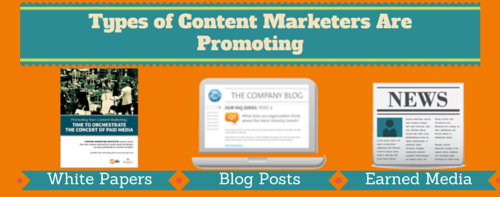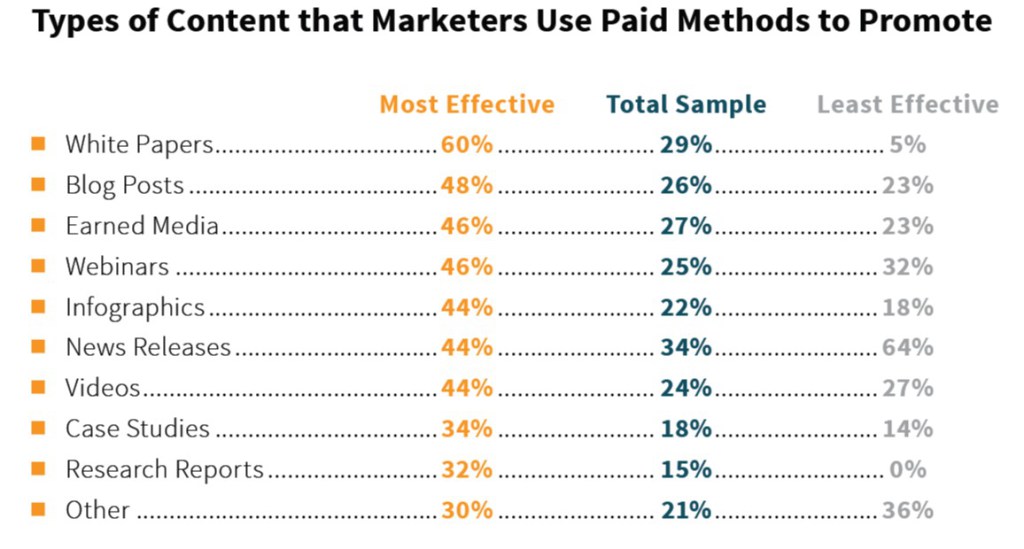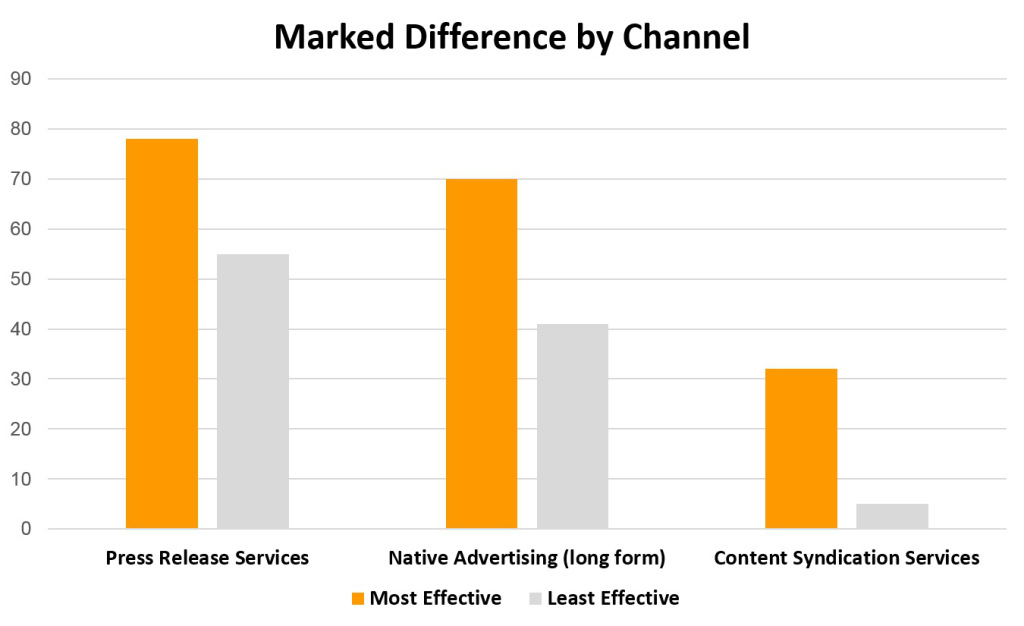
A new survey conducted by PR Newswire and Content Marketing Institute (CMI) reveals some clear areas of distinction between effective and less effective content marketers. According to Robert Rose, chief content strategist for CMI, although the results show that even those on the lower end of the effectiveness spectrum are promoting a variety of content types, the more effective content marketers spend more to build their audience while the least effective content marketers struggle to use content to drive sales and revenue. The main takeaway from these findings as discussed in the webinar, “Communications Trends for 2015: Creative Approaches to Content Promotion” is to focus less on the direct selling aspect of marketing and invest more in creating quality content that builds an audience through a diverse and integrated channel strategy, including paid promotion.
Why use paid promotion if free options are available?
Rose addressed the common misconception that promoting content on social media is free. Even though there is no cost to create a social media page, social media platforms like Facebook, LinkedIn, and Twitter are effectively publishers, and you have to pay to reach their audience. Posts which are not sponsored or promoted at best reach the audience you have already acquired on your page – and that’s only if they happen to see it on their newsfeed or actively visit your page.
“It’s not just about promoting through organic means, we also have to put some investment around the content we’re creating,” said Rose.
If you’ve taken the time and made the initial investment to create and design content properly to deliver real value for readers, why wouldn’t you make the additional investment required to ensure that it is discovered by relevant audiences wherever they are finding and digesting information?
What types of content are marketers promoting?
Owned content such as white papers and blog posts are among the most highly ranked content types that effective marketers use paid methods to promote. These pieces of content are non-advertorial, evergreen and build a loyal, engaged audience. Deciding what content to prioritize requires experimentation, but the best places to start in process and strategy are the areas where you most need to drive growth, such as audience awareness or cross-sell/up-sell. The good news is that marketers are already skilled in experimentation – A/B testing on platforms follows a classic go-to-market model.
What are the best channels for promotion?
Rose advised marketers to utilize traditional tactics and channels (think: press releases) in unconventional ways to monetize and acquire audience. The survey results show that 78 percent of the most effective content marketers use press release services as a part of their content promotion strategy. Rose argued that a lack of imagination in using press releases can result in their being viewed as “ineffective for content marketing.” He suggests writing the stories you want the media to cover and using the wire to amplify them to create more value, from a content marketing perspective.
What are some results of effective content promotion?
Don Montuori, vice president of publishing at MarketResearch.com, uses press releases to promote the company’s original content and thought leadership with goals of increasing exposure, credibility, brand awareness, web traffic, and revenue. Part of the strategy behind promoting market research via press releases is to catch the attention of reporters.
“Reporters like data and information they can plug into their story – they like trends and quotes,” says Montouri. “It’s a way of getting original content out.”
Distribution increases the likelihood that a journalist will find a data point produced by your brand. It’s not always about getting the attention of larger publishers such as the New York Times; the targeting abilities of wire distribution also allow you to spread the word to the trade publications and niche bloggers who influence your industry and the broader audiences you are looking to reach. Getting exposure through the media will subsequently increase credibility because the reporter used your research.
Montuori shared that incorporating press releases into MarketResearch.com’s content promotion strategy resulted in a greater number of press inquiries and citation, and positively impacted traffic to the company website. Additionally, the press releases served as a new tool for sales teams to share with clients and prospects.
Bottom line: If marketers budget their efforts to focus more on building an audience through content marketing and less on straight product promotion, they will be able to move their newly acquired audience across the buyer’s journey because they trust and believe in the brand’s expertise.

